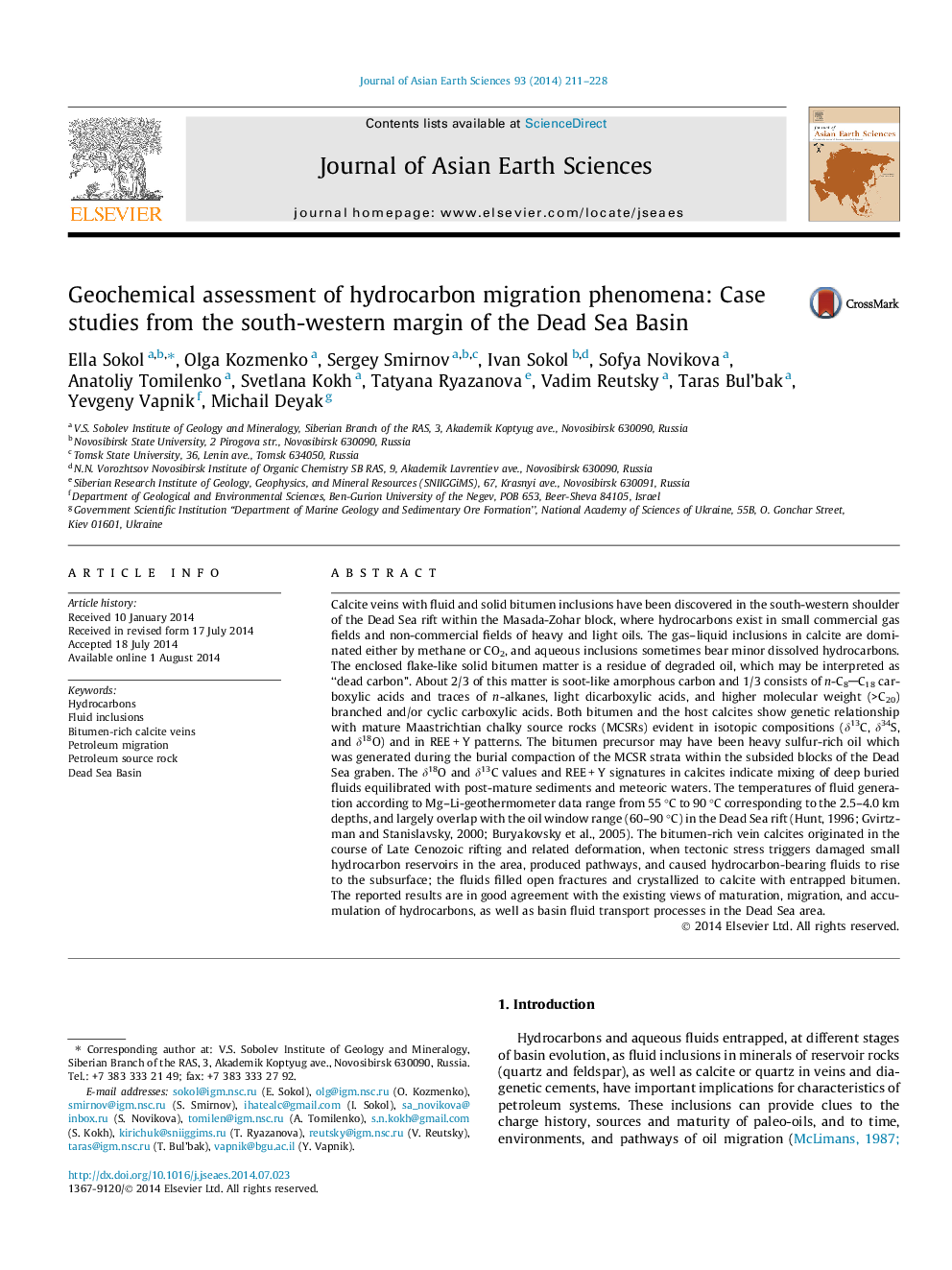| Article ID | Journal | Published Year | Pages | File Type |
|---|---|---|---|---|
| 4730731 | Journal of Asian Earth Sciences | 2014 | 18 Pages |
•Calcite veins with fluid and bitumen inclusions were discovered in the Dead Sea area.•Bitumen and the host calcites show genetic relation with Maastrichtian chalky source.•The bitumen precursor has been degraded sulfur-rich oil.•The temperature of fluid generation is 55–90 °С corresponding to the 2.5–4.0 km depths.
Calcite veins with fluid and solid bitumen inclusions have been discovered in the south-western shoulder of the Dead Sea rift within the Masada-Zohar block, where hydrocarbons exist in small commercial gas fields and non-commercial fields of heavy and light oils. The gas–liquid inclusions in calcite are dominated either by methane or CO2, and aqueous inclusions sometimes bear minor dissolved hydrocarbons. The enclosed flake-like solid bitumen matter is a residue of degraded oil, which may be interpreted as “dead carbon”. About 2/3 of this matter is soot-like amorphous carbon and 1/3 consists of n-C8C18 carboxylic acids and traces of n-alkanes, light dicarboxylic acids, and higher molecular weight (>C20) branched and/or cyclic carboxylic acids. Both bitumen and the host calcites show genetic relationship with mature Maastrichtian chalky source rocks (MCSRs) evident in isotopic compositions (δ13C, δ34S, and δ18O) and in REE + Y patterns. The bitumen precursor may have been heavy sulfur-rich oil which was generated during the burial compaction of the MCSR strata within the subsided blocks of the Dead Sea graben. The δ18O and δ13C values and REE + Y signatures in calcites indicate mixing of deep buried fluids equilibrated with post-mature sediments and meteoric waters. The temperatures of fluid generation according to Mg–Li-geothermometer data range from 55 °С to 90 °С corresponding to the 2.5–4.0 km depths, and largely overlap with the oil window range (60–90 °С) in the Dead Sea rift (Hunt, 1996; Gvirtzman and Stanislavsky, 2000; Buryakovsky et al., 2005). The bitumen-rich vein calcites originated in the course of Late Cenozoic rifting and related deformation, when tectonic stress triggers damaged small hydrocarbon reservoirs in the area, produced pathways, and caused hydrocarbon-bearing fluids to rise to the subsurface; the fluids filled open fractures and crystallized to calcite with entrapped bitumen. The reported results are in good agreement with the existing views of maturation, migration, and accumulation of hydrocarbons, as well as basin fluid transport processes in the Dead Sea area.
